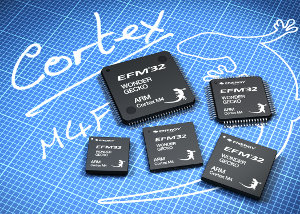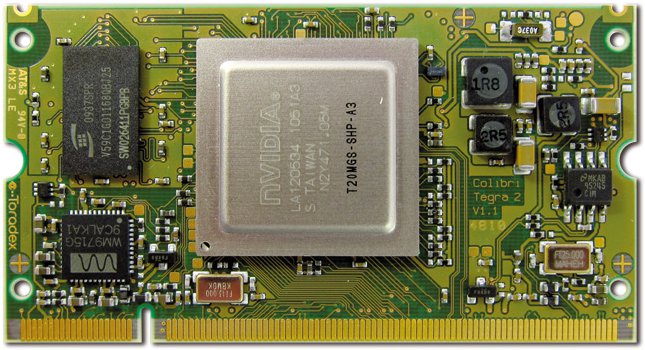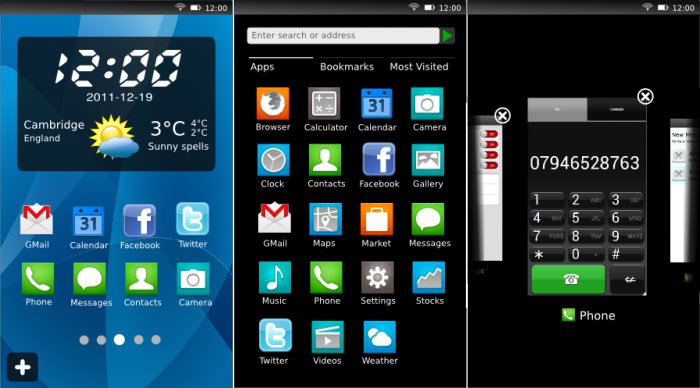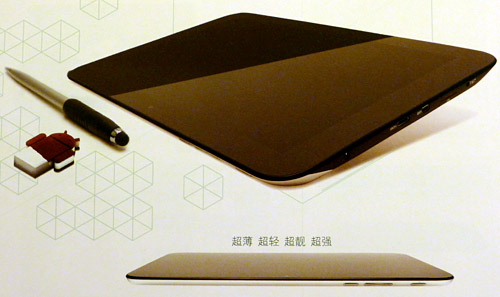Linaro has just released version 12.02 based on Linux Kernel 3.3-rc and Android 4.0.3. Among the key points, they have started to work on Freescale i.MX6 SabreLite board, included libav 0.8 to Ubuntu images which provides up to 160% performance improvement while playing real-media videos and XBMC is available via PPA. Here are the highlights of the release: Android Linaro Android can now be built with current GCC 4.7 snapshots. A 4.7 based toolchain build preview is also available. Linaro Android can boot on iMX6 Sabrelite boards. All test result spreadsheets have been streamlined and are now easier to use. Bluetooth enablement have been completed for the Origen board. A Prototype of using camera on Snowball was made. Presentations Given by Linaro Android Team this cycle “Binary Blobs Attack!!!” – Embedded Linux Conference. “What Android and Embedded Linux can learn from each other” – Embedded Linux Conference. “Integrating Projects Using […]
TI Dual Core OMAP 5 Cortex A15 (800 Mhz) Twice as Fast as Nvidia Tegra 3 Quad Core Cortex A9 (1.3 Ghz)
Texas Instruments released a video showing the Web page loading time between TI OMAP 5 featuring two ARM Cortex-A15 cores at 800MHz (as well as specialized cores and accelerators), compared to a commercial device powered by a quad-core ARM Cortex-A9 processor at 1.3 GHz. They did not say it, but it’s got to be the Nvidia Tegra 3 since this is the only ARM Cortex A9 Quad-core processor with products available on the market today. In this benchmark, the devices handle 3 tasks simultaneously: Rendering 20 web pages Downloading videos Play a MP3 file The result is quite amazing, even hard to believe, with the OMAP 5 rendering the 20 pages in 95 seconds whereas it took the NVidia Tegra 3 over 200 seconds. I’m sure we’ll get an explanation of this performance difference at MWC 2012. Jean-Luc Aufranc (CNXSoft)Jean-Luc started CNX Software in 2010 as a part-time endeavor, before […]
Energy Micro Introduces Cortex-M4F EFM32 Wonder Gecko MCU Series
Energy Micro has just announced the EFM32 Wonder Gecko series with the addition of 60 ARM Cortex-M4F based MCU to its Gecko offering or a total of 240 MCUs. The new controllers are highly energy efficient and minimize energy consumption by including a flexible range of standby and sleep modes, intelligent peripherals that allow designers to implement many functions without CPU wake-up, and ultra-low standby current. Wonder Gecko MCUs come with 256KB Flash memory and 32KB RAM and can achieve active mode current consumption of just 180µA/MHz. Devices provide a deep sleep mode that consumes just 400nA with RTC running, a shut-off mode requiring only 20nA and wake-up time as short as 2µs. The company explains that the LESENSE function block, a generic low energy sensor interface, enables monitoring of a mix of up to 16 capacitive, inductive or resistive sensors while the MCU core is in sleep or shut-off […]
Atollic TrueSTUDIO for ARM 3.0 To Be Released at Embedded World 2012
Atollic has just announced that Atollic TrueSTUDIO for ARM 3.0 – a C/C++ development tool for embedded developers – will be released on the 28th of February 2012, at Embedded World 2012, Nuremberg, Germany. Atollic TrueSTUDIO v3.0 will bring the following improvements: Redesigned user interface that is more intuitive to C/C++ developers New support for NXP LPC1000 Cortex-M0 and Cortex-M3 devices New support for Infineon XMC4000 Cortex-M4 devices New support for Energy Micro EFM32 (Cortex-M3) Upgraded support for STMicroelectronics STM32 devices Improved real-time interrupt tracing with ARM Serial Wire Viewer (SWV) interface. Execution time profiling now present information using bar charts Upgraded ECLIPSE platform to the latest “Indigo” release (3.7.1) Major upgrade of the GNU command line tools Upgraded TrueINSPECTOR, TrueANALYZER and TrueVERIFIER add-on products Supports over 800 ARM devices Hundreds of minor improvements Since the product has not been released, that’s currently all information there is. Further information will certainly […]
Seneca Uses GuruPlug Server Farm to Build Raspberry Pi Fedora Distribution
Prior to the Raspberry Pi Fedora 14 Remix launch party, Seneca has uploaded a video showing the work they have done to have Fedora 14 work on Raspberry Pi. Here are some interesting points ion this video: All basics application such as a web browser, office suite, the components you need to build a LAMP (Linux, Apache, MySQL, PHP) server… are already working. 2D graphics acceleration is not implemented yet, so the first release may feel a bit sluggish. But eventually, since the Raspberry Pi has a pretty good GPU, 2D support (OpenVG in Cairo library?) will be implemented at some points in time, either by Seneca or other people in the development community. Seneca uses around 60 ARM devices in their build farm that generates all the binaries for the Fedora ARM Remix release (e.g. the ones you can get with “yum install”) and among those device there are […]
Toradex Will Unveil Colibri T30 Nvidia Tegra 3 COM at Embedded World 2012
Toradex, a Swiss technology company specialized in embedded systems, will be at Embedded World 2012 to showcase their products and technology including: An Embedded Computer Kit with Colibri T20 (Nvidia Tegra 2 Computer on Module) and Iris carrier board. Instant boot demo (480 ms) in WinCE with their NVidia COM The new Colibri T30 COM powered by Nvidia Tegra 3 (Quad-core Cortex A9 processor) At the conference, they will give away 100 Embedded Computer Kits (they also call it “Performance Kit”) based on Colibri T20 and Iris board to the attendees who give 20 Euros to the Red Cross. The regular price of this kit is 200 Euros. This embedded module comes preloaded with Windows Embedded Compact 7 , but you can download the Linux BSP and update the board firmware. The Colibri T20 key features include: Dual Core Nvidia Tegra 2 ARM Cortex A9 Processor @ 1 Ghz 256 […]
Mozilla Boot to Gecko (B2G) OS Is Coming to Your Smartphone
Mozilla, non-profit organization, well known for its Firefox web browser and Thunderbird mail client has recently moved to the mobile space with Firefox for Android browser for smartphones and tablets. However they intend to go even further by releasing a mobile operating systems named Boot to Gecko (B2G) competing directly with Android, iOS and Windows Phone. Mozilla mobile operating system will use web standards (like Tizen does) and the goal is to displace proprietary, single-vendor stacks for application development (e.g. Android, iOS, WP7). The OS itself will relies on the Linux kernel and some open source libraries and the B2G applications will be written using HTML5/Javascript/CSS3 standard. Basically, it will boot Linux and use the Gecko engine (like in Firefox) to render application in a way similar to what Google does with Chrome OS. The HTML5-based user interface of B2G is called Gaia and is a collection of web apps. […]
Ziilabs Unveils HanZpad Android 4.0 Tablet Reference Design
ZiiLABS, a subsidiary of Creative Technology, has announced the HanZpad platform, a tablet reference design based on ZiiLABS ZMS-40 StemCell Media Processor (4 ARM Cortex A9 cores and 96 GPU cores) optimized for Android 4.x (ICS) and a Chinese operating system. The HanZpad platform is built around Ziilabs ZMS-40 processors with four 1.5GHz ARM Cortex-A9 CPUs and 96-core for the GPU. The ZMS-40 SoC supports H.264 HP decoding of up to 3840×1080 for true 1080p 3D stereo, and 2560×1600 (WQXGA) display resolution support. The firmware can also be upgraded to support for High Efficiency Video Coding (HEVC) aka H.265 which can increase data compression ratio by up to 2 times compared to H.264. Beyond the ZMS-40 processor, the key features of the tablet are as follows: 10.1-inch, 1,280 x 800-pixels IPS panel 1GB memory micro SDHC slot (up to 64GB) Wi-Fi and Bluetooth connectivity 22-hour battery life (~1W power consumption) […]








